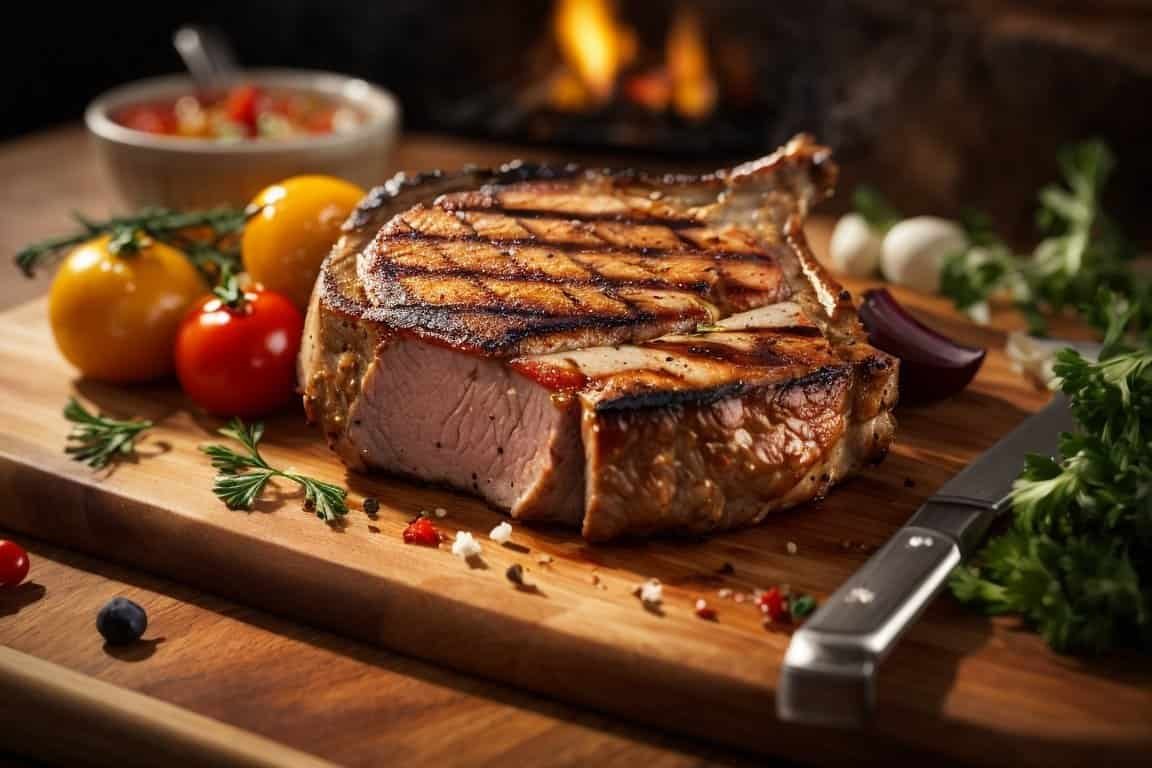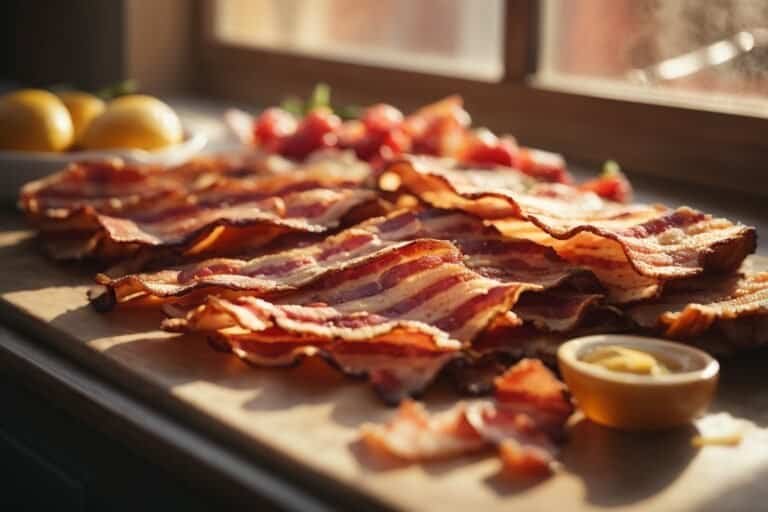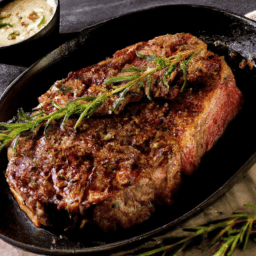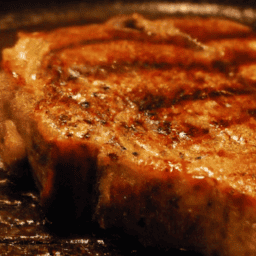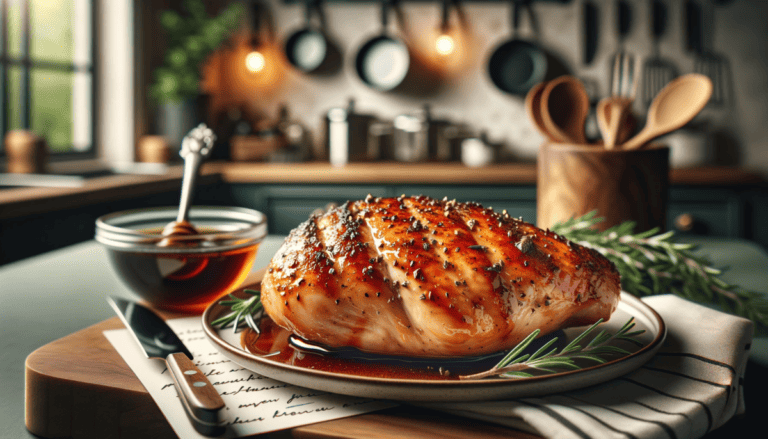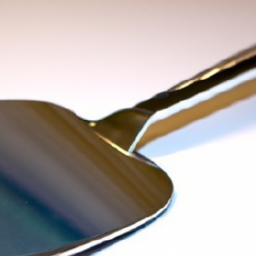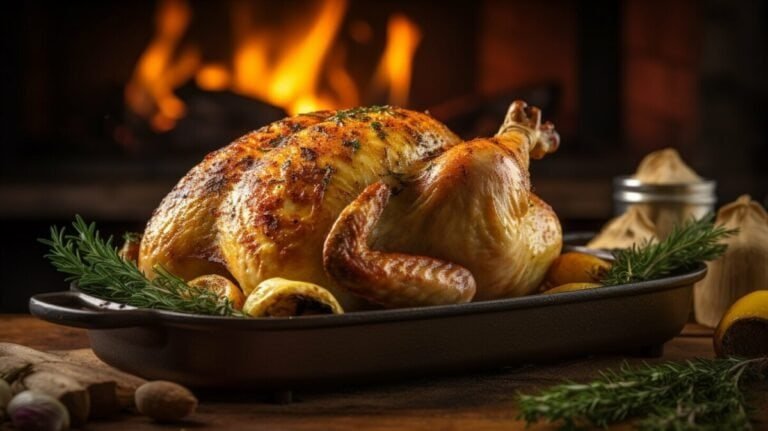How To Cook Thick Pork Chops Perfectly Every Time
Listen up, you culinary thrill-seekers and flavor junkies! Forget everything you thought you knew about pork chops. We’re diving into the high-stakes world of how to cook thick pork chops, and let me tell you, it’s a game-changer. You think you’ve tasted pork chops? Not like this, you haven’t.
We’re not just throwing meat on a pan and hoping for the best. Oh no, we’re talking about a foolproof alchemy of searing and oven-baking that transforms these humble cuts into succulent masterpieces. This isn’t just cooking; it’s a culinary journey that’ll make your taste buds think they’ve died and gone to hog heaven.
So, buckle up, my gastronomic adventurers. We’re about to elevate your kitchen game to levels you never thought possible. By the end of this, you won’t just be serving pork chops; you’ll be serving a revelation. Prepare to be the culinary rockstar of your circle as we unlock the arcane secrets of how to cook thick pork chops that are so juicy and flavorful, they’ll haunt your dreams—in a good way.
Selecting the Right Pork Chops
Choosing the right cut
When it comes to selecting pork chops, the first step is to choose the right cut. There are various cuts available, each with its own unique characteristics. The most popular cuts for thick pork chops are bone-in ribeye, boneless center-cut, and bone-in loin chops.
Bone-in ribeye chops are well-marbled with fat, making them incredibly flavorful and juicy. They are perfect for those who enjoy a rich and succulent taste. On the other hand, boneless center-cut chops are leaner with less marbling. They are a great option for those who prefer a leaner cut of meat. Lastly, bone-in loin chops are known for their tenderness and exceptional flavor. This cut is versatile and can be cooked using various methods.
Selecting fresh pork chops
When choosing pork chops, it is important to select fresh ones to ensure the best taste and quality. Look for chops that have a pinkish-red color, as dull-looking or grayish chops may indicate spoilage. Avoid pork chops with excessive amounts of fat around the edges, as this can make them greasy when cooked.
To ensure freshness, check the package’s expiration date and ensure it is within the recommended timeframe for consumption. Additionally, purchasing pork chops from a reputable butcher or grocery store known for their quality meat products is advisable.
Importance of how to cook thick pork chops for juiciness
The thickness of your pork chops plays a crucial role in achieving juiciness. Thick pork chops, usually around 1 to 1.5 inches, are preferred over thin ones as they are less likely to dry out during cooking. Thicker cuts allow for a longer cooking time, ensuring that the inside of the pork chop is cooked thoroughly while retaining its moisture and tenderness.
Thin pork chops tend to cook quickly but can easily become dry and tough if not carefully monitored. Therefore, when selecting pork chops, thicker cuts ensure a juicy and flavorful final result.
Preparation before Cooking
Rinsing and drying the pork chops
Before cooking your pork chops, it is important to rinse them under cold water to remove any excess blood and bone fragments. Pat them dry using a paper towel to remove any moisture on the surface. This step helps in achieving a better sear and prevents any potential splattering during cooking.
Salt Your Pork the Night Before
Salting the meat in advance isn’t just a step; it’s should be a ritual. Sprinkle that beautiful crystalline substance generously over your pork chops, making sure to cover every inch. What you’re doing here is allowing the salt to penetrate deep into the meat, breaking down the muscle fibers and enhancing the natural flavors. This isn’t just seasoning; it’s a full-on flavor invasion.
Once you’ve salted your pork chops, let them sit in the fridge, uncovered, for at least 24 hours. This allows the salt to work its way into the very core of the meat, ensuring each bite is a harmonious blend of flavor and texture. Trust me, once you’ve tasted a pork chop that’s been properly salted, there’s no going back.
Marinating options for enhanced flavor
Marinating your pork chops is a wonderful way to infuse them with extra flavor. You can choose from a variety of marinades, such as a citrus-based marinade with lemon or orange juice, a savory marinade with soy sauce and garlic, or even a sweet marinade with honey and mustard.
To marinate your pork chops, simply place them in a sealable plastic bag along with your choice of marinade. Allow them to marinate in the refrigerator for at least 30 minutes, but preferably overnight, to let the flavors penetrate the meat. Remember to discard any leftover marinade after use to avoid cross-contamination.
Room temperature resting
Before cooking your marinated or dry-rubbed pork chops, it is essential to let them come to room temperature. Allowing the chilled meat to rest at room temperature for around 30 minutes before cooking ensures a more even process. This helps the pork chops cook more uniformly and reduces the risk of dryness in the center while the exterior cooks to perfection.
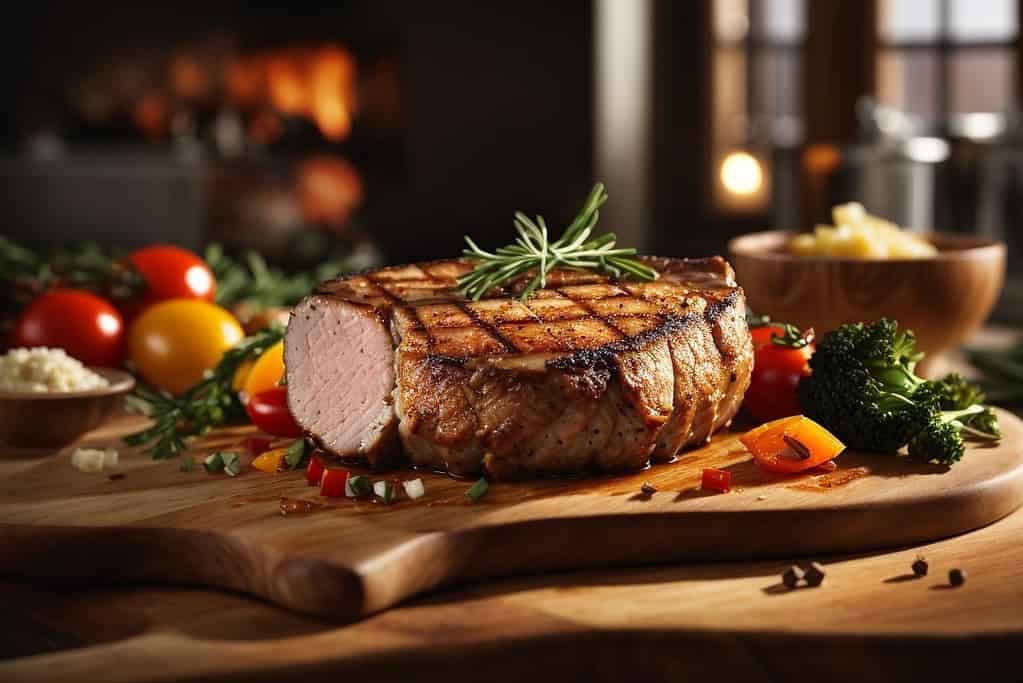
Choosing the Correct Cooking Methods
Pan-searing for a crust
Pan-searing is a fantastic cooking method for achieving a delicious crust on your pork chops. Start by heating a skillet over medium-high heat and adding a small amount of oil. Once the oil is hot, carefully place the pork chops in the pan, making sure not to overcrowd it. Allow the chops to sear for about 3-4 minutes on each side until they develop a golden-brown crust.
Baking for even cooking
Baking thick pork chops is an excellent method for ensuring even cooking throughout. Preheat your oven to 375°F (190°C) and line a baking sheet with foil or parchment paper for easy clean-up. Place the pork chops on the baking sheet, leaving enough space between them. Bake for approximately 20-25 minutes or until the internal temperature reaches 145°F (63°C). Remove from the oven and let them rest for a few minutes before serving.
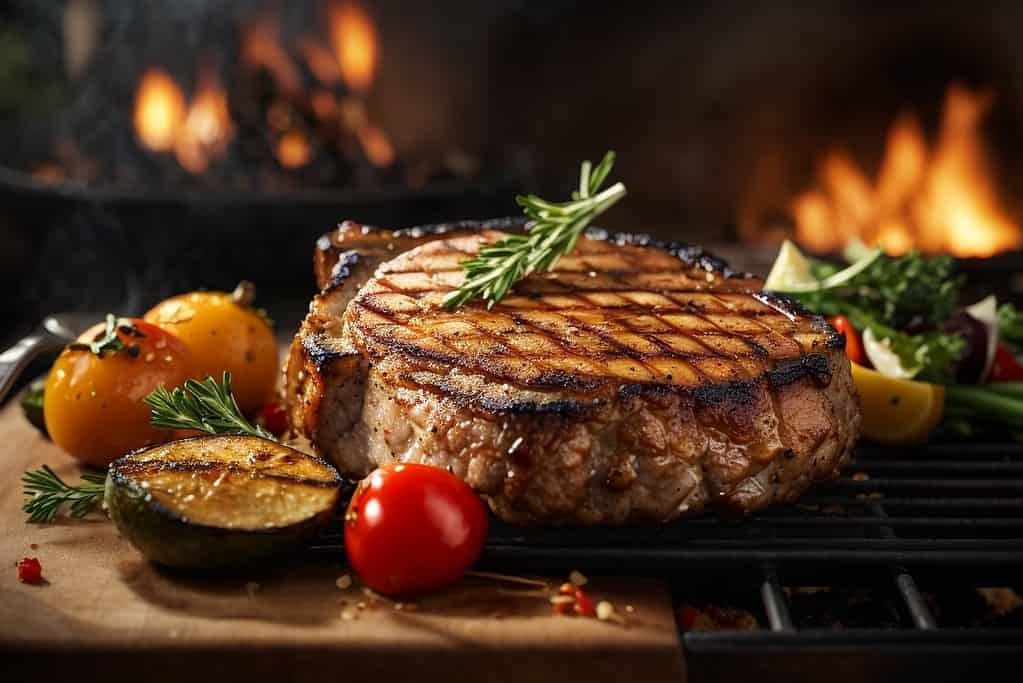
Grilling for a smoky flavor
Grilling your pork chops adds a wonderful smoky flavor to the meat while creating beautiful grill marks. Preheat your grill to medium-high heat and lightly oil the grates to prevent sticking. Place the pork chops on the grill and cook for about 4-5 minutes per side. A meat thermometer ensures the internal temperature reaches 145°F (63°C). Once done, let the pork chops rest for a few minutes before slicing.
Proper Seasoning
Choosing your herbs and spices
When it comes to seasoning your pork chops, the options are endless. Popular choices include herbs like rosemary, thyme, and sage, which add a fragrant and earthy flavor. Spices like paprika, garlic powder, and black pepper can also enhance the taste of your pork chops. Experiment with different combinations to find your favorite blend of flavors.
Properly seasoning for flavor penetration
To ensure maximum flavor penetration, generously season both sides of your pork chops with your chosen herbs and spices. Make sure to coat the entire surface evenly, pressing the seasoning into the meat to help it adhere better. Allowing the chops to sit for a few minutes after seasoning gives the flavors time to meld together and enhance the overall taste.
Balancing flavors
Finding the right balance of flavors is essential when seasoning your pork chops. It is important to consider the natural sweetness of the pork chops and pair it with savory or tangy seasonings. For example, if you choose to marinate your chops with a sweet and tangy BBQ sauce, you may want to season them with a blend of savory spices to balance out the flavors. It’s all about finding the perfect harmony between the various taste elements.
1. Pan-Searing Technique
Heating your pan
Before pan-searing your pork chops, it is crucial to heat your pan properly. Start by selecting a heavy-bottomed skillet, such as a cast-iron pan, to ensure even heat distribution. Place the skillet over medium-high heat and add a small amount of oil, such as vegetable or canola oil. Allow the pan to heat up for a few minutes until the oil starts to shimmer, indicating that it’s hot enough for searing.
Proper searing for a golden brown crust
To achieve a beautiful golden brown crust, lay the pork chops in the hot skillet, making sure not to overcrowd the pan. The pork chops should sizzle as they make contact with the hot oil. Allow them to sear for approximately 3-4 minutes on each side without moving them to ensure an even browning. Once they develop a caramelized crust, flip the chops and sear the other side for an additional 3-4 minutes.
Ready for the oven – transferring and temps
After achieving the desired sear, transfer the pan-seared pork chops to a preheated oven to finish cooking. Preheat your oven to 375°F (190°C) and place the skillet with the pork chops directly into the oven. Cook for about 12-15 minutes or until the internal temperature reaches 145°F (63°C). The oven provides gentle and indirect heat, allowing the pork chops to cook evenly while retaining their juiciness.
2. Oven Baking Method
Preheating your oven
Before baking your pork chops, preheat your oven to 375°F (190°C). This ensures that the oven is at the correct temperature before the chops are placed inside. Preheating the oven helps in achieving a more consistent and even cooking process.
Correct positioning in the oven
When baking thick pork chops, it’s important to position them correctly in the oven for optimal cooking. Place the pork chops on a lined baking sheet, leaving enough space between them to allow hot air circulation. This ensures that the heat is evenly distributed, resulting in thorough cooking and preventing any hot spots.
Baking times and temperatures
The baking time and temperature for thick pork chops vary depending on the thickness and desired level of doneness. As a general guideline, bake the pork chops at 375°F (190°C) for approximately 20-25 minutes. Use a meat thermometer to check the internal temperature, which should read 145°F (63°C) for safe consumption. Remember, thicker pork chops may require a longer cooking time, so adjust accordingly.

3. Grilling Method
Preparing your grill
Before grilling your pork chops, it is essential to properly prepare your grill. Start by preheating your grill to medium-high heat. Clean the grates with a grill brush and lightly oil them to prevent the chops from sticking. Preparing the grill ensures even cooking and prevents the pork chops from tearing or sticking to the grates.
Grilling times and techniques
Grilling thick pork chops requires careful timing and technique to achieve perfection. Place the pork chops on the preheated grill and close the lid. Cook for approximately 4-5 minutes on each side, depending on the thickness of the chops. Use a meat thermometer to check the internal temperature, which should reach 145°F (63°C) for safe consumption. It’s important to avoid overcooking the chops to prevent them from becoming dry.
Adding extra flavor while grilling
While grilling your pork chops, you can enhance their flavor by adding extra elements. For example, you can baste them with a marinade or brush them with a glaze during the last few minutes of grilling. This adds an extra layer of flavor and creates a delicious caramelized coating on the outside of the chops. Get creative with different sauces, herbs, or even a sprinkle of brown sugar for a touch of sweetness.
Checking Doneness
Using a meat thermometer
To ensure that your pork chops are perfectly cooked, it is highly recommended to use a meat thermometer. Insert the thermometer into the thickest part of the chop, away from any bones, to get an accurate reading. The internal temperature should reach 145°F (63°C) for safe consumption. By using a meat thermometer, you can avoid undercooking or overcooking the pork chops, ensuring they are juicy, tender, and safe to eat.
Visual cues for doneness
Apart from using a meat thermometer, there are visual cues that can help determine the doneness of your pork chops. A perfectly cooked pork chop should have a slightly pink center while the exterior is golden brown. The meat should be firm to the touch but still give a slight bounce back. Avoid cooking the pork chops until they turn completely white, as this may result in dryness.
Resting times before slicing
After the pork chops reach the desired doneness, it is crucial to let them rest before slicing. Resting allows the juices to redistribute within the meat, resulting in a juicier and more flavorful end result. Cover the pork chops loosely with foil and let them rest for about 5 minutes. This simple step ensures that the chops stay moist and tender, making every bite a delight.
Serving Suggestions
Pairing thick pork chops with sides
Thick pork chops make a fantastic centerpiece for a delicious and satisfying meal. They pair well with a variety of sides, allowing you to create a well-rounded plate. Consider serving your pork chops with options such as roasted vegetables, mashed potatoes, sautéed greens, or a refreshing salad. The contrasting textures and flavors of the sides will complement the richness of the pork chops, creating a harmonious and memorable dining experience.
Drizzles and sauces that enhance
Elevate the flavor of your pork chops by drizzling them with a tasty sauce or condiment. A pan sauce made from the drippings can be a simple and flavorful addition. Alternatively, you can opt for a tangy barbecue sauce, a creamy mushroom sauce, or a zesty chimichurri. The choice of sauce depends on personal preference and can be tailored to complement the seasoning and cooking method used for the pork chops.
Serving sizes and presentation tips
When it comes to serving thick pork chops, portion size is an important consideration. A typical serving size for a thick pork chop ranges from 8 to 12 ounces per person. However, this may vary depending on individual appetites and the presence of other accompanying dishes. To enhance the presentation, consider garnishing the plate with fresh herbs or a sprinkle of microgreens. Pay attention to the arrangement of the sides to create an appealing and visually pleasing plate.
Storing and Reheating Leftovers
Proper storing in the fridge
If you have any leftover pork chops, storing them properly in the refrigerator is important to maintain their freshness. Place the pork chops in an airtight container or wrap them tightly in plastic wrap. For better organization, you can label them with the date of storage. Stored correctly, pork chops can be refrigerated for up to 3-4 days, ensuring they remain safe to consume.
Reheating without losing juiciness
When reheating leftover pork chops, it is important to be cautious to avoid drying them out. To retain their juiciness, it is recommended to use a gentle reheating method, such as using a skillet or oven. Preheat a skillet over medium heat, add a small amount of oil, and heat the pork chops for a few minutes on each side until heated through. Alternatively, you can reheat them in a preheated oven at 325°F (163°C) for approximately 10-15 minutes or until warmed to your liking.
Freezing and thawing tips
If you can’t consume your leftover pork chops within a few days, you can freeze them for longer storage. Wrap each pork chop individually in plastic wrap, then place them in a freezer-safe bag or container. Label the packaging with the date of freezing. When ready to enjoy, thaw the pork chops in the refrigerator overnight. This gradual thawing process helps maintain their texture and minimizes moisture loss. Once thawed, you can reheat them using one of the gentle methods mentioned above.
With these comprehensive tips and techniques, you are well-equipped to confidently select, prepare, cook, and serve thick pork chops. Whether you choose to pan-sear, bake, or grill them, remember to take into account the thickness, seasoning, and desired level of doneness. With a little care and attention, you can create mouthwatering pork chops that will impress your family and friends.
Thick Pork Chop Recipes
Certainly, here are the 10 tantalizing pork chop recipes that you absolutely need to try. For the full experience, you can find them all detailed on Taste Bud Confessions.
The Ultimate Pork Chop Recipe List
- Spiced Pork Chops with Apple and Sage Chutney
- Coffee and Maple-Glazed Pork Chops
- Pork Chops in Citrus and Rosemary Marinade
- Pork Chops with Spicy Mango Salsa
- Pork Chops with Blue Cheese and Walnut Crust
- Pork Chops with Pomegranate and Mint Sauce
- Pork Chops with Lavender and Honey
- Miso and Ginger Pork Chops
- Pork Chops with Chocolate and Chili
- Pork Chops with Coconut and Lime
Additional Unique Pork Chop Recipes
- Pork Chops with Sherry Pan Sauce with Ras Al Hanout
- Panko-Breaded Pork Chops
- Grilled Pork Chops with Burst Blueberry Sauce
FAQ on How to Cook Thick Pork Chops
Q: What are Thick Pork Chops?
A: Thick pork chops are pork chops that are cut to a thickness of 1 1/2 to 2 inches. They are known for their juiciness and full flavor compared to thinner cuts.
Q: Where Can I Buy Thick Pork Chops?
A: You can buy thick pork chops at most grocery stores. However, you may need to ask the butcher for this specific cut.
Q: Should I Choose Bone-In or Boneless?
A: It is recommended to go for bone-in pork chops as the bone helps to retain both flavor and moisture during cooking.
Q: How Do I Prepare Thick Pork Chops for Cooking?
A: Start by seasoning your pork chops with your choice of spices or marinades. Make sure to cover all sides evenly.
Q: What Cooking Methods are Suitable for Thick Pork Chops?
A: Thick pork chops can be grilled, baked, or smoked. Each method has its own set of guidelines for optimal results.
Q: How Long Should I Cook Thick Pork Chops?
A: The cooking time varies depending on the method used. For grilling or baking, it usually takes around 20-30 minutes. Always check the internal temperature to ensure it reaches at least 145°F.
Q: Can I Use a Smoker to Cook Thick Pork Chops?
A: Yes, using a smoker is an excellent way to infuse additional flavor into your pork chops. The cooking time may vary, so monitoring the internal temperature is essential.
Q: What Should the Internal Temperature Be?
A: The internal temperature of cooked pork chops should be at least 145°F, as recommended by the USDA.
Q: How Do I Keep My Pork Chops Juicy?
A: To keep your pork chops juicy, it’s crucial to avoid overcooking. Using a meat thermometer can help you monitor the internal temperature accurately.
Q: Any Tips for Serving Thick Pork Chops?
A: Allow the pork chops to rest for a few minutes after cooking to redistribute the juices. Serve with your choice of sides, and enjoy!

